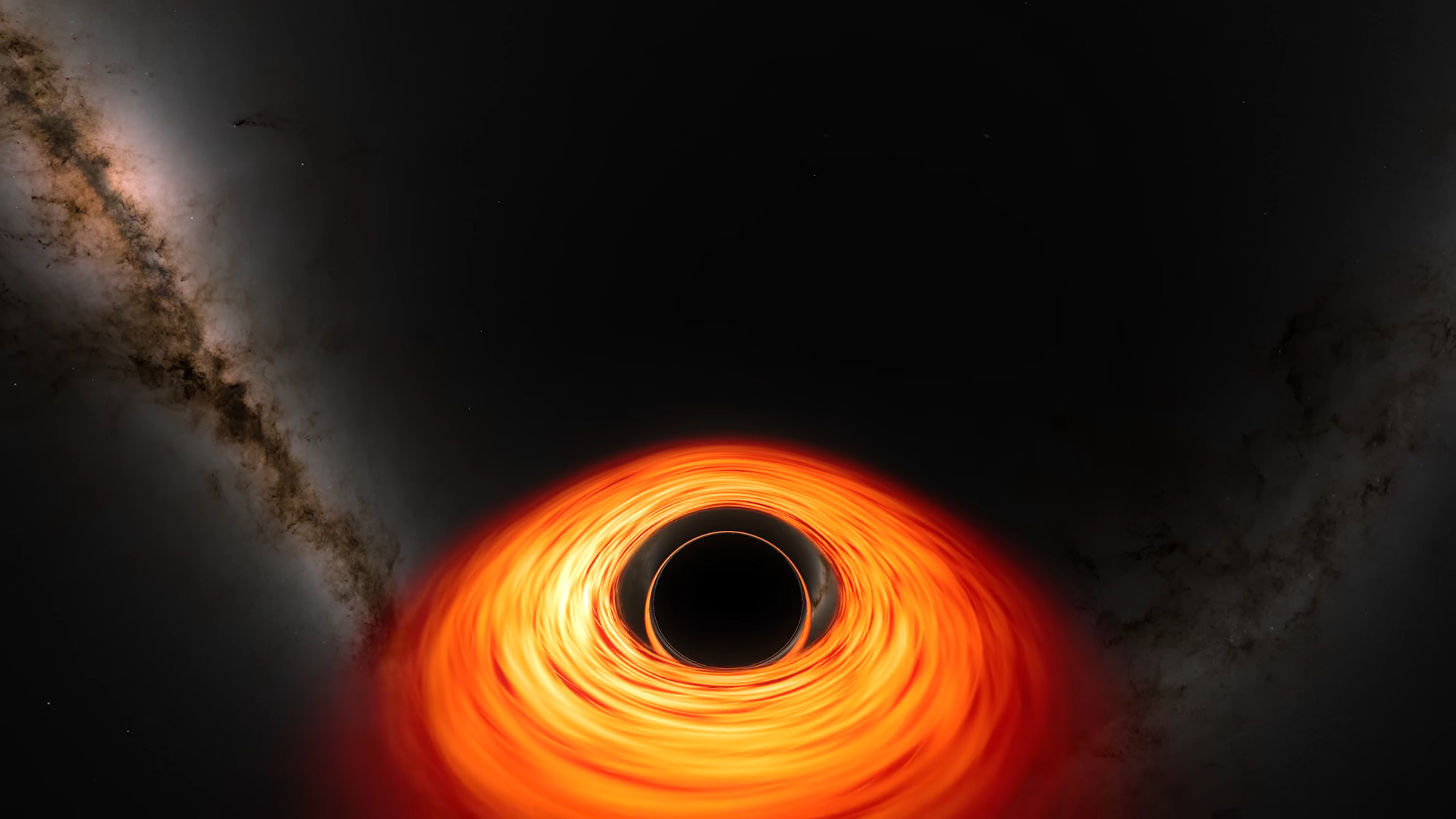What does it feel like to fall into a black hole? There is a lot of content online that answers this question. NASA is doing its part, by publishing a 360° video of a simulated dive into the singularity. The opportunity to watch what happens in this journey of no return, in complete safety.
It's an experience that humanity will probably never live through, and that's no worse: to “fall” into a black hole is to condemn yourself to a disastrous end. The gravitational force exerted there will have the effect of stretching the body of the unfortunate person – a phenomenon called spaghettification. In the end, you would just be a thin stream of molecules.
Advertisement
It is therefore better to keep a good distance from the event horizon. Indeed, it constitutes the surface around the black hole and a path of no return. Once this border is crossed, it is impossible to escape the singularity. Even the light will not be able to escape. This is why these holes are black. We cannot see them directly.
These implacable characteristics do not, however, prevent us from carrying out a thought exercise to imagine what would happen if we entered a black hole. There are already tons of articles and videos on the subject. The film Interstellar also explores this problem, depicting a humanity in dire straits.
Diving into a black hole with 360° video
It is within this framework that the contribution made on May 6 by the American space agency falls. The Goddard Space Flight Center YouTube channel posted a video that simulates diving into a black hole. A 360° video (this functionality has existed for almost ten years on the platform), to orient the camera's point of view.
A simulation that was not done on the corner of a table. She mobilized a NASA supercomputer, called Discover. Here he worked on “ a scenario in which a camera enters the event horizon. » Usually, Discover works on climate simulation – Earth sciences being a focus of NASA's work.
Advertisement
“ The project generated approximately 10 terabytes of data, equivalent to approximately half of the estimated text content of the Library of Congress », explains Goddard. He ” took about 5 days of work on just 0.3% of Discover's 129,000 processors. » A typical laptop PC would do it in a decade.
The black hole simulated here is from the class of supermassive black holes, whose mass is equivalent to 4.3 million times the mass of the Sun — a star that is as massive as 330,000 planets Earth — and the Sun alone represents 99.86% of the mass of the solar system. This gives a good idea of the juggernaut. But there is worse.
In real time, the camera would take about 3 hours to fall into the event horizon. But, explains NASA, “ for anyone observing it from afar, it would never quite get there. As space-time becomes more and more distorted as it approaches the horizon, the camera image slows down and appears to freeze just before the horizon. »
But that's just an impression. “ Once the camera crosses the horizon, its destruction by spaghettification is only 12.8 seconds away » to arise. “ From there, the singularity is only 128,000 kilometers away. This last stage of the journey is over in the blink of an eye “, tell the American space agency.

This simulation, which suffers from certain limits (Goddard admits that it does not run, ” to simplify complex calculations “), offers in passing a point of comparison with Sagittarius A*. Behind this name lies a black hole, located in the center of the Milky Way, our galaxy. And Sagittarius A* has a mass of 4.3 million times the Sun.
Sagittarius A* received a lot of media attention in 2022, when it was possible to produce the first photo showing the black hole (but we have to go back to 2022 for the first photo of a black hole). An image which inevitably raised questions, about what we see on the screen or about the quality of the visual.
NASA has published another, longer video, which serves as a guide to understanding what is happening in the first – the explanations are in English, but are not out of reach. For those who have seen Interstellar, it will bring back some memories, if not able to go there — Sagittarius A* is 26,673 light years away.
Which black hole is better to fall into?
Incidentally, astrophysicist Jeremy Schnittman answered a question that may be on your mind: if I fall into a black hole, is it better to fall into a small model or into a supermassive version? You never know, in the event that humanity leaves the Solar System, which is frankly not a given.
“ If you have a choice, you want to fall into a supermassive black hole. Stellar-mass black holes, which contain up to about 30 solar masses, have much smaller event horizons and larger tidal forces, which can shred approaching objects before they reach the horizon. »


See the world from space
